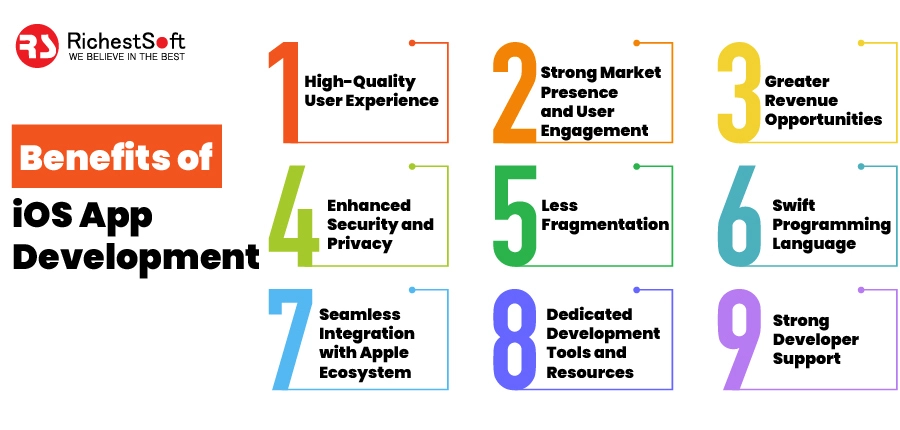It’s important to get your product’s pricing just right.
If your product is similar to other offerings on the market, its pricing will be especially important to customers. This is true even if it offers unique features that competitors’ products don’t (although, perhaps less so in this case).
Even if your product doesn’t have any direct competitors, it’s unlikely that you’d be able to charge whatever you want, especially in a bad economy. There’s always a ceiling.
On a similar note, you don’t necessarily need to have a unique business idea to be profitable. You can offer essentially the same product that other businesses are offering but get ahead of them by offering a better customer experience, user experience, brand, or — you guessed it — price.
In order to get your product’s pricing just right, you’ll want to gauge your customers’ price sensitivity, a metric that describes how sensitive your customers are to your product’s price changes, as well as gain insight into how your customers value your product in general.
In this guide, you’ll learn about the two main types of price sensitivity surveys, how to use them to determine how much customers are willing to pay for your product, and what can be changed (if anything) to ensure that customers ultimately choose your product over the competition.
Table of contents
What is price sensitivity?
Price sensitivity is a metric that describes how sensitive your customers are to your product’s price changes. This, in addition to how your customers value your product in general, is important to know.
What is a price sensitivity analysis?
A price sensitivity analysis measures how changes to your pricing strategy affect demand for your product or service. This often involves issuing price sensitivity surveys to your customers and even your competitors’ customers.
What are price sensitivity surveys?
When conducting a price sensitivity analysis, surveys are among the most valuable tools to determine the optimal pricing strategy for a product.
Now, I know what you’re thinking: won’t respondents just say $0? No, because price sensitivity surveys methodically get respondents to answer realistically.
There are two main types of price sensitivity surveys:
1. Price laddering
The price laddering method involves asking respondents how willing they’d be to pay for the product at various price points in descending order on a scale of 1–10, where the optimal price is the first answer that meets a target score (e.g., 7/10) chosen by you.
The downside to this method is that the potential price points are predetermined, so they could end up not reflecting the price that respondents actually want to pay, invalidating the survey.
Therefore, you should only choose this method if you already have a good idea of what customers want to pay, perhaps using the pricing of rival products as a guide.
2. Van Westendorp’s Price Sensitivity Meter (PSM)
Van Westendorp’s Price Sensitivity Meter method is more popular than the price laddering approach. Ask respondents at which price they would consider the product expensive, cheap, too expensive, and too cheap.
The upside to this method is that it’s more open-ended — respondents aren’t restricted at all and can even specify the range of amounts they’d be willing to pay. This gives you more flexibility when it comes to pricing.
With that in mind, consider using the price laddering method for summative research only.
When to do a price sensitivity analysis
If customers are churning at a rate that concerns you (there’s no magic number; it depends on the product/industry), you’ll want to conduct a price sensitivity analysis urgently. Include free trial users that are churning and free plan users that aren’t upgrading.
That said, it’s better to prevent churn before it happens, so there’s certainly no harm in carrying out price sensitivity surveying regularly. More specifically, you’ll want to do so every time your product goes through some significant changes (e.g., new features) and every time your competitors do the same. This is to ensure that customers plan to buy your product again/continue to subscribe and that they’re getting what they want at the price they want.
If you throw in additional questions (recommended), you’ll also be able to find out which competitors are getting your customers’ attention (if any), why, and what you can do to ensure that they keep choosing your product.
And, of course, you can also use price sensitivity surveys to price new products and product ideas.
How to conduct a price sensitivity survey (5 steps)
To conduct a price sensitivity survey, follow these steps:
- Write the survey questions
- Recruit respondents and send the survey
- Synthesize the results
- Implement new pricing (if necessary)
- Calculate the price sensitivity score
1. Write the survey questions
If you’re going with the price laddering method then the initial questions should look like this:
- On a scale of 1–10, how willing would you be to pay for [product] at [price]?
- On a scale of 1–10, how willing would you be to pay for [product] at [price]?
…and so on
Subscribe to our product management newsletter
Get articles like this to your inbox
If you’re going with Van Westendorp’s Price Sensitivity Meter method, then the initial questions should look like this:
- At what price would you consider [product] to be so expensive that you wouldn’t consider buying it?
- At what price would you consider [product] to be starting to get expensive, where buying it isn’t out of the question but you would have to give it some thought?
- At what price would you consider [product] to be a bargain (good price, good quality)?
- At what price would you consider [product] to be priced so low that you would assume the quality is low?
For additional insight, I’d suggest throwing in these questions too:
- Are you considering alternative products? If so, what makes you want to switch and what’s stopping you from doing so?
- What are our product and other products not doing or not doing well?
- What else could we improve upon?
- If our product was perfect, describe how that would impact the amount you’d be willing to pay
2. Recruit the respondents and send the survey
This is the easiest step.
Ordinarily, your respondents (the more the better) should be your customers, so assuming that you have their contact details, simply round them up and then send them the survey, optionally segmenting a specific demographic first (e.g. beta users that have tried a specific feature).
Check out TechRadars’s guide to survey tools for details on tools to use.
3. Synthesize the results
First, calculate each respondent’s price point. If you’re using the price laddering method, this is typically the first price point that meets the target score. When choosing the target score, be realistic — the only scenario where respondents will say 10/10 is when the price point is close to $0.
With the Van Westendorp Price Sensitivity Meter, the respondent’s price point is typically halfway between their “bargain” answer and their “starting to get expensive” answer — although you might need to lean more toward their “starting to get expensive” price point if their ‘bargain’ price point doesn’t cover your running costs.
After that, if the price points are all in the same ballpark, simply work out the mean average. For example:
Customer #1 price point + Customer #2 price point ÷ 2 Customers = Average price point
However, if the price points are wildly different (so much so that you believe that a single price point wouldn’t satisfy all customers), consider letting respondents craft their own product “tiers” using a modified version of card sorting and then assigning a price to each tier using your best judgment of the price sensitivity survey results. The pricing doesn’t need to be perfect; it can be fine-tuned with A/B testing later.
For the additional questions, consider affinity mapping the answers to quantify how often each piece of feedback arises. Later on, you’ll naturally want to focus on popular feedback first as part of a long-term plan to improve the product.
In the short-term, focus on updating the pricing for the current product offering (if necessary).
4. Implement the new pricing (if necessary)
Pricing changes can be startling to customers, so it’s not something that you’ll want to do often. This means that after determining your new pricing, you’ll want to A/B test it to make sure that this change would be the right choice, comparing it to the old pricing to see which one performs better.
However, to avoid customers getting buyer’s remorse after discovering that they ‘missed out on a lower price’ or waiting to purchase in hope that the product will be at that price again (not knowing that others only got that price due to unknowingly participating in an A/B test), leverage ‘discounts’ to ensure that everyone pays the same price ultimately.
If you’re not sure how to do A/B testing, check out Cristian Rita’s guide to A/B testing.
Follow up with further A/B tests if you think that the price point(s) can be optimized further.
Skipping price sensitivity surveying completely and jumping right into A/B testing is another approach, but, you won’t gain any insight along the way and you’ll never find out if customers love the new pricing or just tolerate it. There are many factors involved when it comes to choosing a product, so customers loving your pricing vs. only liking it (or hating it) can be the difference maker.
5. Calculate the price sensitivity score
Price sensitivity is a measure of how much the demand changes when the price changes. If the pricing of a product increases but the demand stays roughly the same, that product is what we call price inelastic. Products are usually price inelastic when they have no or few competitors, or when customers have no choice but to buy them. Their price sensitivity score would be less than 1.
How to calculate price sensitivity
The formula to calculate price sensitivity is as follows:
Price sensitivity = % change in quantity purchased / % change in price
For example, if the quantity purchased increased by 20 percent after the change in price decreased by 6 percent, the price sensitivity score would be 3.33 (elastic):
0.20 / 0.06 = 3.33
If you’re just not into math (don’t blame you), I’d suggest using a price sensitivity calculator.
A low price sensitivity score could also mean that newly shipped features were worth the price hike or that customers are reluctant to switch to a different product because they’re used to how your product works.
As you can see, pricing is a very nuanced concept. However, the additional survey questions, combined with your product’s price sensitivity score, can reveal the whole story so you know exactly what’s happening and why.
To do a truly accurate price sensitivity analysis, you’d need to conduct price sensitivity surveying without making any changes to the product (aside from the pricing, of course). In this scenario, an inelastic score would mean that pricing doesn’t even matter all that much to customers.
Analyzing price sensitivity for competitors’ products
The grass is greener on the other side, as they say.
Using price sensitivity surveys, your customers can tell you what they think of your competitors. However, your competitors’ customers will have a different perspective.
By carrying out price sensitivity surveying with your competitors’ customers, you can find out more about the competition and even what it would take to make them switch to your product. This enables you to scale your product, not just retain the customers you already have.
Be generous with how broadly you define “competitor.” As an example, if Netflix was the only streaming service (i.e., Hulu, Disney+, etc. didn’t exist), they wouldn’t necessarily dominate the home entertainment space. At the wrong price or in a bad economy, customers could seek alternative forms of home entertainment such as gaming or audio books.
In short, there’s rarely such a thing as having no competitors.
Conclusion
A product’s pricing is just as important as its quality. It’s also dynamic — subject to change according to customer needs, user needs, competitor movements, operational costs, and so on — so you’ll want to use price sensitivity surveys to stay on top of these changes, perhaps regularly depending on how dynamic the market is.
Got any tips to share? A preferred price sensitivity surveying method? If so, let us know using the comment section below.
Thanks for reading!
Featured image source: IconScout
LogRocket generates product insights that lead to meaningful action
LogRocket identifies friction points in the user experience so you can make informed decisions about product and design changes that must happen to hit your goals.
With LogRocket, you can understand the scope of the issues affecting your product and prioritize the changes that need to be made. LogRocket simplifies workflows by allowing Engineering and Design teams to work from the same data as you, eliminating any confusion about what needs to be done.
Get your teams on the same page — try LogRocket today.
Source link






Leave a Reply